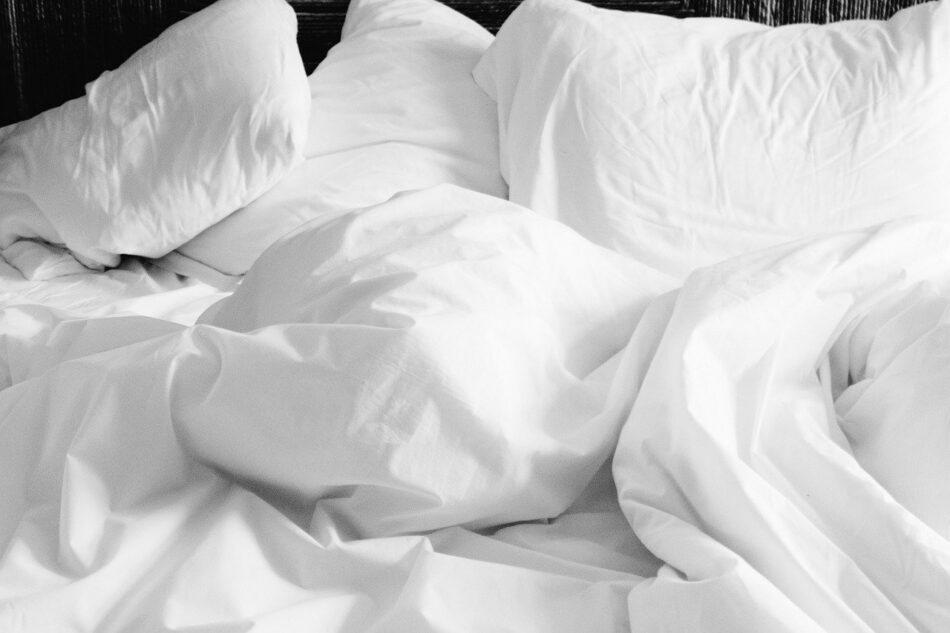Prepare Your Business for New Food Waste Legislation in the UK
From 31 March 2025, most UK businesses must arrange separate food waste collections. Learn and prepare for the new food waste legislation in the UK.

Recycling bedding, blankets, duvets, and pillows is a green option to throwing them away with general waste that ends up in landfill. Whether you want to get rid of old bedding from your home, a hotel, care home, hospital, or any other business, understanding the materials they’re made from can help you best dispose of any old or damaged bedding.
Find out how to dispose of old bedding in the UK from your home or business with our answers to some of your most frequently asked questions. Learn what you can do to start recycling bedding and safely dispose of other textiles in this guide.
Bedding and blankets class as textile waste. While some bedding is recyclable, sadly many items such as duvets and synthetic blankets cannot always be recycled. These items are considered suitable for landfill.
Bedding has been around for millennia, so it’s impossible to pinpoint any single inventor. However, we do know that the first bed sheets were likely to have been woven in ancient Egypt and fashioned out of linen (a fabric made from the flax plant).
Bedding covers a broad category of items made from different materials and in various ways. For example, duvets contain more types of materials than a bed sheet. Common materials bedding is made from include cotton, linen, polyester, silk, acetate, nylon, acrylic, and bamboo.
For an idea of how bedding is made, this is a quick guide to the manufacturing process for making bed sheets from cotton bales:
You can dispose of old bedding and blankets in the UK in different ways depending on its condition and your circumstances:
Bedding with stuffing, such as duvets and pillows cannot be recycled and must be disposed of in landfill or incineration. Some textile banks have strict acceptance policies and refuse all types of bedding – whatever its condition.
If you can’t find a textile bank that accepts bedding or if your bedding is soiled, you must put it in an airtight plastic bag and place it in the general waste section of your local waste management centre. You can also call Business Waste on 0800 211 8390 or contact us online and we can help dispose of your bedding.
In most cases you sadly can’t recycle pillows in the UK. This is mainly because they’re usually made from a variety of different materials, which are hard to separate and recycle. However, you can often recycle pillowcases alongside old clothes and other textiles – as these are normally made from one material.
No, recycling old duvets even in a good condition is not normally possible. Instead, most disposal of duvets involves them going with general waste to landfill or for incineration. An eco-friendlier way to get rid of old duvets is to donate to a charity shop, homeless or animal shelter for use as bedding.
While recycling pillows and duvets may not be possible yet, you can often recycle duvet covers. It’s also worth checking with your local authority or licensed waste carrier, as there may be more environmentally friendly ways to dispose of a duvet based on your specific nearby facilities.
Bedding and blankets thrown in with general waste will be sent to landfill or for incineration. If your old bedding and blankets are accepted by a textile bank, it will either be sent to a charity for reuse or reprocessed to make new garments or bedding.
Unfortunately, most types of bedding cannot be recycled. This means it typically ends up in landfill, where it can take years to decompose and contribute to pollution. According to recent stats, more than 50% of people buy new sheets at least once a year, creating a massive sustainability problem.
Fortunately, the bedding and blanket industry is starting to release more eco-friendly products that last for years and are recyclable. Alternative bedding materials look out for include organic cotton, organic hemp, Tencel, lyocell, organic latex, and eucalyptus. If your bedding is in good condition but non-recyclable, another alternative to consider is giving it to a friend or donating to a charity shop.
Bedding is typically accepted free of charge by waste management and recycling centres for households. If you run a hotel, care home, hospital, or other business and need bedding and blanket disposal – talk to us to arrange commercial waste collection.
Here are a few fun facts you may not know about bedding:
Find out more about other rubbish streams.
Get a fast FREE quote for your bedding and blanket disposal
From 31 March 2025, most UK businesses must arrange separate food waste collections. Learn and prepare for the new food waste legislation in the UK.
The study participants included business owners and company employees, revealing unexpected findings about corporate environmental practices.